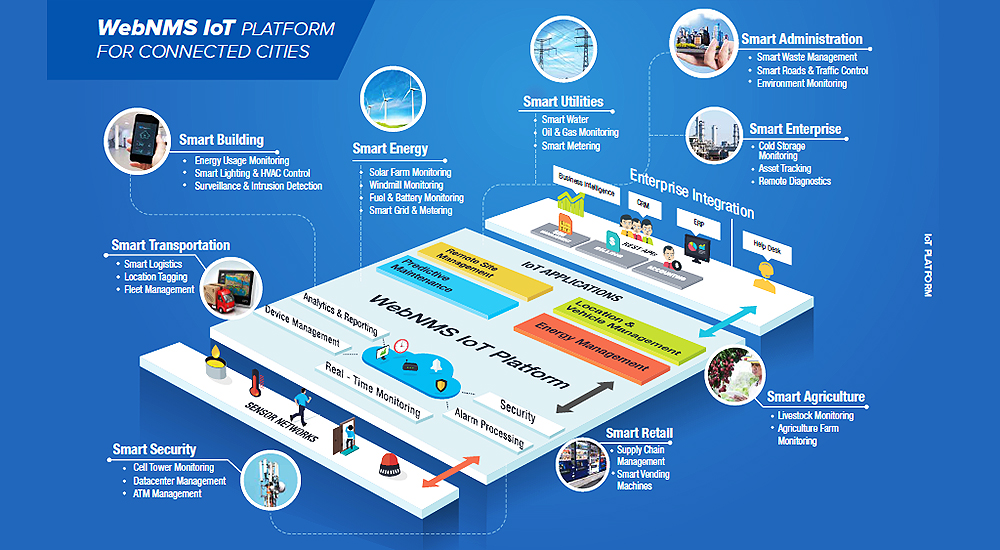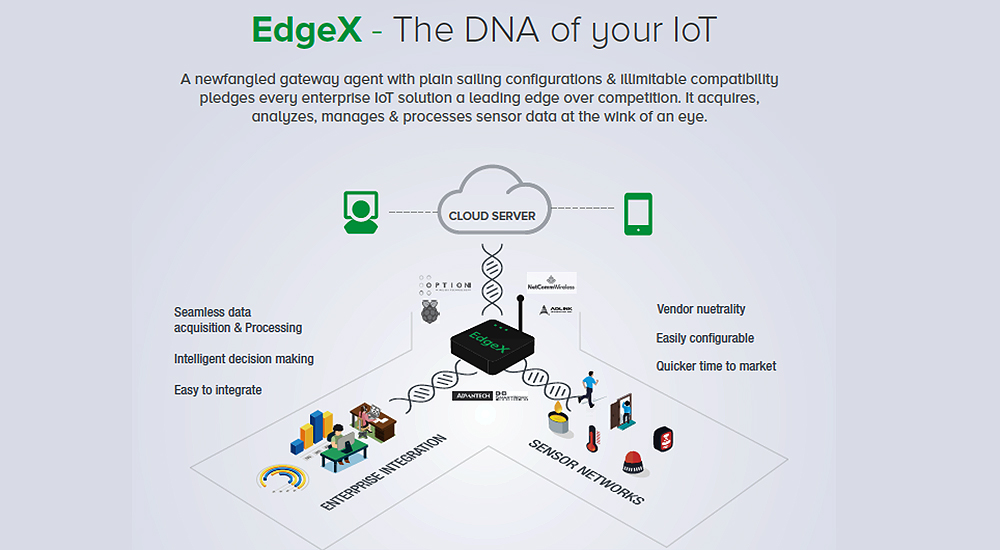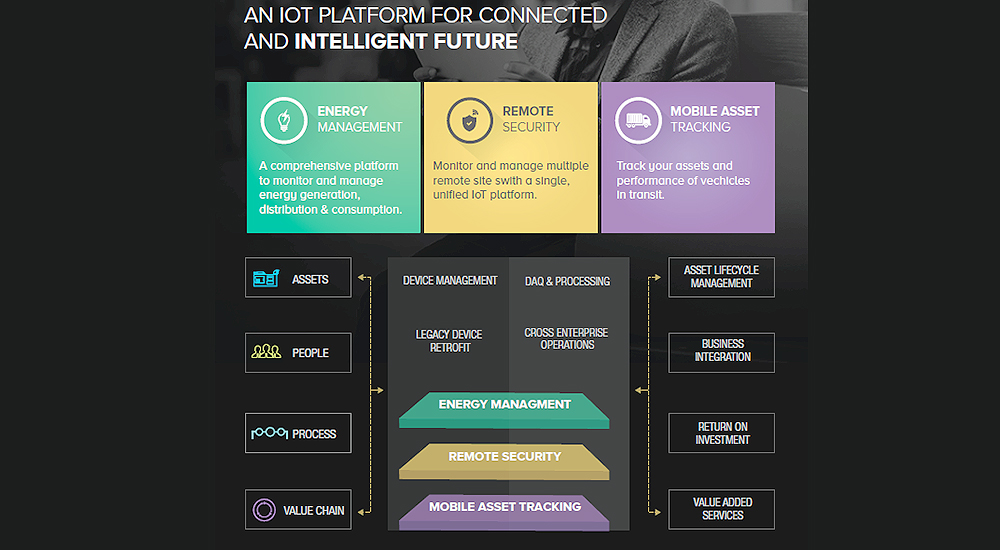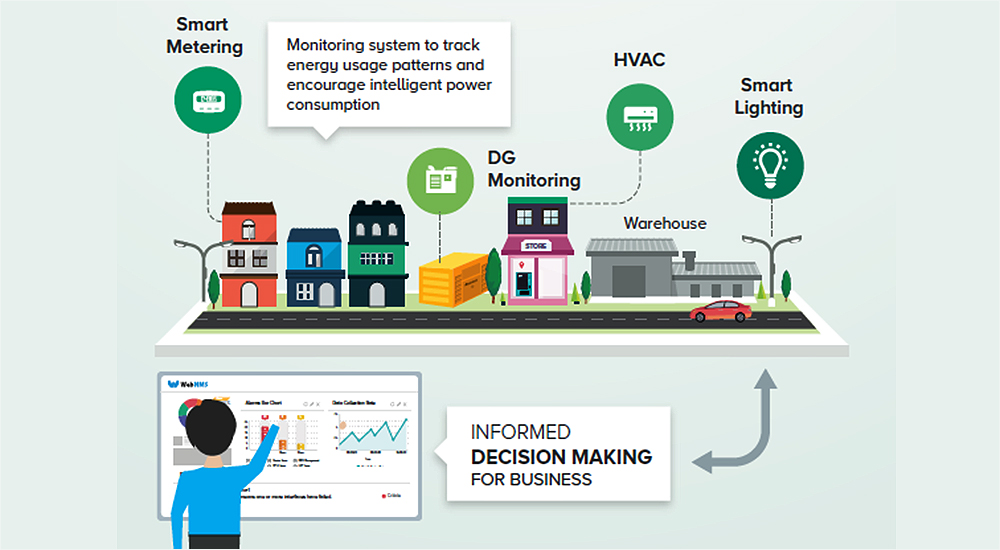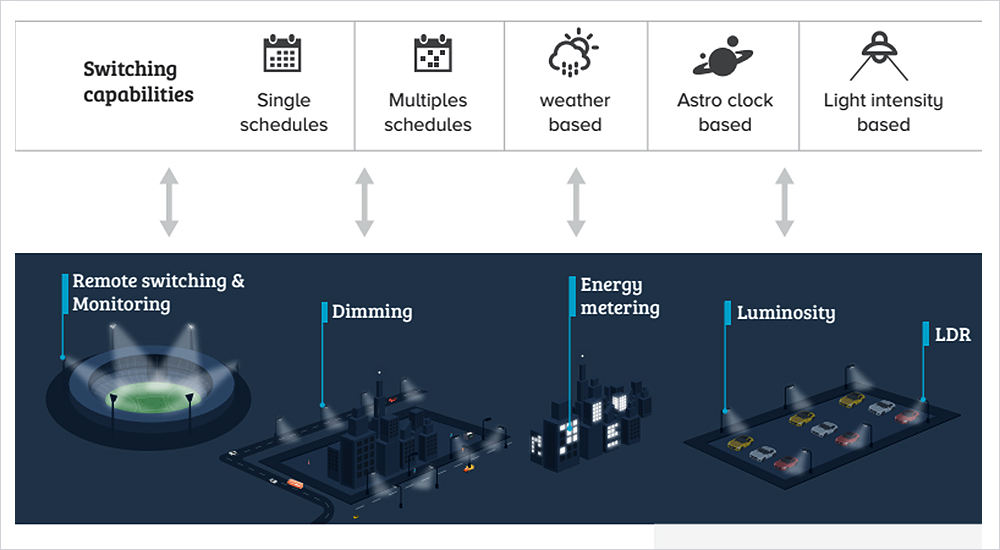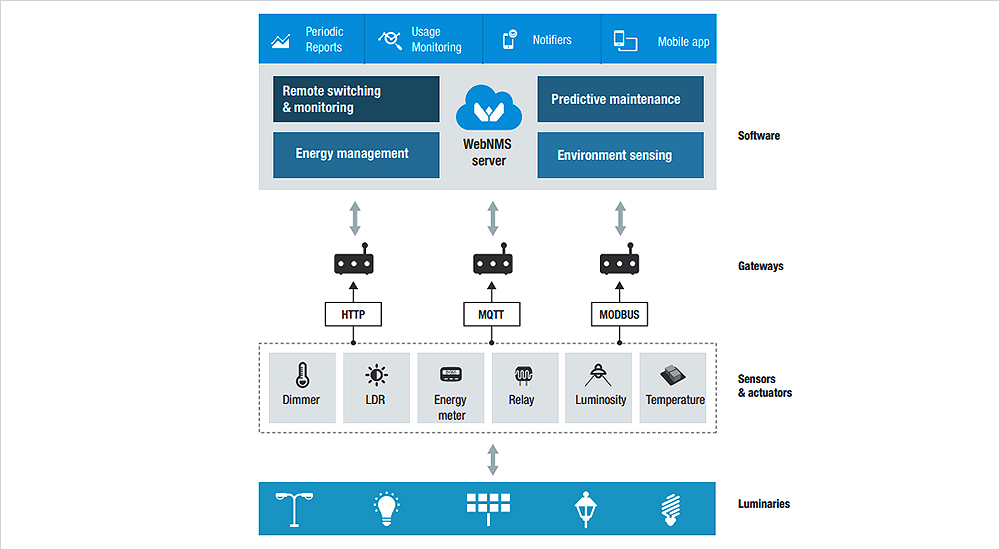Industrial Management Technology and Contracting or Imtac operates in Middle East and Caspian Region and is based out of Oman. It offers the following IoT based solutions: Smart lighting, smart logistics, smart transport, smart electricity, smart water, smart environment, smart building, smart infrastructure, smart health and smart industries. Imtac has established itself to carry out large technology projects in the region. Imtac has established a separate IoT brand, EmpyrealIoT that provides multiple managed solutions, built and supported on WebNMS IoT Platform.
A Middle East customer was managing a sizeable street lighting network, which was distributed across a wide geographic region. The lighting switch on and off was automated based on an electro-mechanical timer setting in the switching panel. However, there was no provision to centrally control and monitor the lighting infrastructure end to end. Resetting the automated on and off lighting required manual intervention.
The setup had additional limitations and pain points. Crew members had to visit switching points to check energy consumption parameters and also perform regular maintenance. There was no centralised monitoring of energy parameters such as power factor, current, voltage, kWh and running hours. Unplanned shutdowns and faults did not have automatic notifications and hence repair and restoration was delayed, resulting in longer outage. These limitations had a direct impact on the increasing cost of manpower, frequent repair and maintenance costs, and inefficient energy consumption.
To cope with rising energy costs, the customer was looking for a system to centrally monitor and manage the health of the street lights, track real-time energy consumption and contribute to the environment through optimal resource usage.
Imtac, the official solutions contractor for the lighting project, chose WebNMS Smart Lighting Solution, a deployable IoT application based on the Symphony IoT Platform. WebNMS offered a solution that Imtac could configure to address the unique requirements of an urban outdoor lighting system. Taking into account the existing automation and energy tracking set up, WebNMS modeled a proof of concept within four weeks’ time and together with Imtac’s team on ground, deployed the actual solution in a time frame of 12 weeks.
The entire infrastructure was programmed with centrally controlled dimming option to regulate lighting area wise. The solution was built on the WebNMS scalable IoT platform, equipped with three enterprise capabilities including Remote Site Management, Energy management, and Location tracking.
Key takeaways
- The solution was built on the WebNMS scalable IoT platform, equipped with Remote Site Management, Energy management, Location tracking
- Imtac is in a position to manage a smart water project that aims at real-time water accounting and optimising usage through intelligent reports
- WebNMS and Imtac are jointly pioneering futuristic lamp posts that could display: time, temperature, humidity, promotional content based on APIs
Explains Karen Ravindranath, Programme Head at WebNMS IoT, Zoho Corporation, “The WebNMS Energy and Fleet Management Solution, built over the cloud-based WebNMS IoT platform, is the key product portfolio which will integrate energy utility data feeds and remote asset tracking data into a unified cloud management solution.” The solutions bring near real-time visibility into energy usage patterns, trends, analytics, reporting. WebNMS fleet management enables tracking, remote monitoring and geo-fencing of mobile assets and vehicles.
“At present, we see enterprises largely adopting IoT, most specifically for optimising and automating energy and operations, and this is where we have created our most beneficial business value,” adds Karen.
Remote site management provides unification of operations, including energy management, remote asset monitoring and location services. It provides a single console view of connected sites, 24×7 monitoring of street lights, automated scheduling using the astronomical clock, using centralised software. Centralised automation reduces manual intervention of service personnel to visit sites.
Energy management provides real time monitoring of energy parameters such as power factor, voltage, load and current, reports of asset health, predictive maintenance through data analytics platform integrated via open APIs, real-time alarms and alerts in case of deviations, light dimming to regulate power consumption based on time, astronomical clock and movements. The entire infrastructure was programmed with centrally controlled dimming to regulate lighting area-wise. Location tracking provides integrated maps and geo-tagging to aid route maintenance crews, and tracking of maintenance fleet.
The solution from Imtac has been built on an extensible, open platform to allow future add-on of applications. There is integration with edge devices such as energy meters, controllers and gateway devices, with the WebNMS IoT platform. It can integrate both legacy lights such as sodium vapor lamps as well as the latest LED lights.
As an offshoot of this smart lighting solution, Imtac is in a position to manage a smart water project that aims at real-time water accounting and optimising usage through intelligent reports using the WebNMS platform. WebNMS and Imtac are jointly pioneering futuristic lamp posts that could display: time, temperature, humidity, promotional content based on APIs.
What have been the benefits of the implementation?
The solution has helped the Middle East customer reduce energy consumption by 30% through automated and centralised lighting control. Real-time asset monitoring and fault alerts have reduced operational costs by 40% through saving in manpower and maintenance costs. And uptime of sites has increased to 97%, with 15% reduction in cost of logistics. These overall savings in costs are expected to give a return on the investment in 24-36 months.


